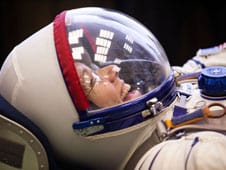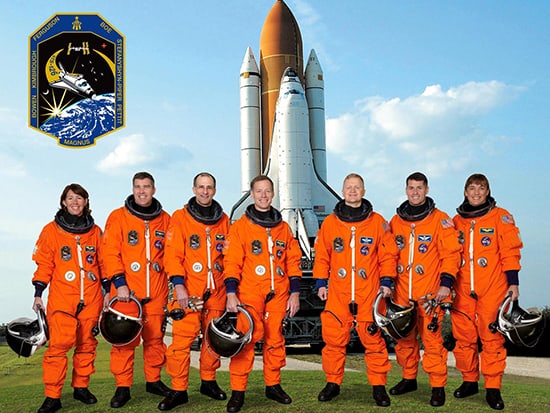Rachel Potter, IIASA communications officer, interviews retired NASA Astronaut and Principal of AstroPlanetview LLC, Sandra H Magnus on insights about our world she has gained from her time living on the International Space Station.

©NASA Photo / Houston Chronicle, Smiley N. Pool
Q: Can you tell us a bit about your specific areas of research as a scientist?
A: My PhD was on a new material system being investigated for thermionic cathodes, which are used as electron sources for satellite communication systems. My research was an effort to look at the system methodically and from a science viewpoint to understand physically what was going on in order to inform the design of more robust devices. If you can operate the cathode at a lower temperature, that means a longer life for it, which is a good thing for satellites! Post-PhD I was however admitted to the Astronaut Office and that, quite frankly, pretty much put an end to my career as a researcher, or at least as a principal investigator (PI). The work I did on the International Space Station was at the direction of other PIs who had proposed, and been granted, experiments in space.
Q: Your career has spanned a wide range of settings from the NASA Astronaut Corps to your current role as Principal of AstroPlanetview LLC – what is the common thread or focus that has run through your work?
A: Following my curiosity and looking for challenges. I always want to be challenged and feel that I am learning new things. If I feel that I have become stagnant, I start looking for how to change that situation.
Q: What have been the personal highlights of your career?
A: Clearly flying in space! I feel very fortunate, however, to have been in the Astronaut Office during the era of the space station. I enjoyed very much working in a collaborative, multicultural, international environment where we had a big team of people from around the world working on something that benefits the planet.
Q: What are the greatest lessons you have learned from seeing the Earth from space?
A: I was so excited to FINALLY be going into space after hoping to do just that for over 20 years. The Earth is our spaceship – a closed system in which everything on the planet affects, and is connected to everything else on the planet. An action somewhere means a reaction somewhere else, even if it is not always first order (and usually it is not). Also, the planet looks incredibly beautiful and very fragile – we have to take care of it!

© NASA STS-126 Shuttle Mission full crew photo (5 March 2008), Sandra H Magnus far left.
Q: What do you see as key to solving the complex problems the Earth faces in terms of sustainability?
A: Having the will to do it as a community. If you have the will, commitment and a clear, agreed-to, articulation of the common goal, we can pretty much accomplish anything we want to.
Q: How do you see IIASA being able to build bridges between countries across political divides?
A: Well, when we want to solve problems, it really is all about relationships at the end of the day. It is easy to demonize or keep your distance from abstract ideas or the ubiquitous “They” but when you meet people, understand them as individuals and the context of their backgrounds that lead them to have different views and approaches to life and solving problems, it is much easier to visualize how you can work together to tackle issues. The relationships are the bridges.
Q: What advice would you give to young women researchers wanting to make it into Aeronautics?
A: To young women (and young men, too, really) I would say, “If you have a dream to go do something, then you owe it to yourself to go for it and try it!” Never let anyone else define who you are or tell you what you can or cannot do – believe in yourself and give it a try. Maybe you will make it, maybe you will not, but it will be on your own terms, with you pushing yourself and regardless of the outcome you will have a deeper understanding of yourself, and that is always a good thing.
Sandra H Magnus visited IIASA on 21 June 2019 in cooperation with the US Embassy Vienna, to give a lecture entitled “Perspectives from Space” to IIASA staff and this year’s participants of the IIASA Young Scientists Summer Program. IIASA has a worldwide network of collaborators who contribute to research by collecting, processing, and evaluating local and regional data that are integrated into IIASA models. The institute has 819 research partner institutions in member countries and works with research funders, academic institutions, policymakers, and individual researchers in national member organizations.
Notes:
This article gives the views of the authors, and not the position of the Nexus blog, nor of the International Institute for Applied Systems Analysis.

You must be logged in to post a comment.